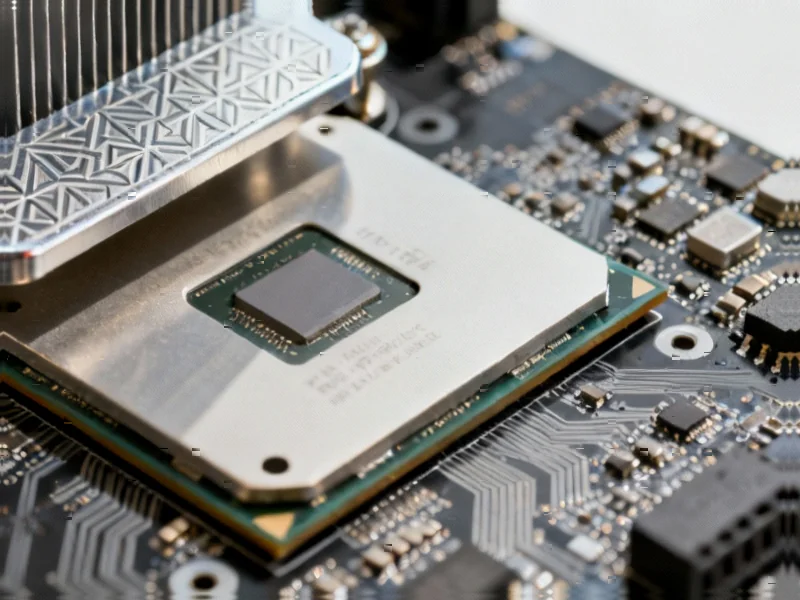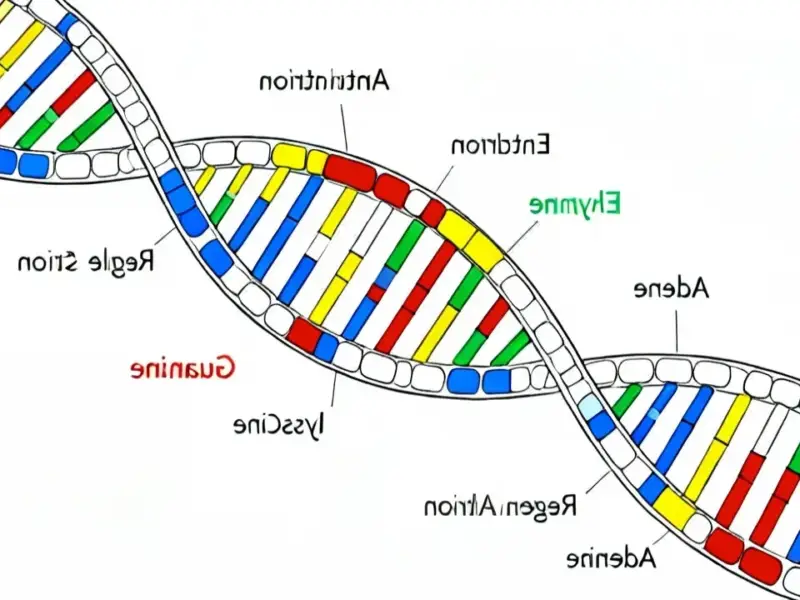According to TheRegister.com, Antonio Salvemini of Bolt Graphics unveiled the company’s forthcoming Zeus graphics accelerator hardware at last week’s Ubuntu Summit 25.10 in London. The Zeus GPUs represent a radical departure from conventional designs, using RISC-V cores with vector extensions and dedicated path tracing acceleration rather than traditional 3D graphics pipelines. The product lineup includes the entry-level Zeus 1C with 32GB LPDDR5 RAM expandable to 160GB, the Zeus 2C with 64GB expandable to 320GB, and a high-end Zeus 4C capable of supporting over 2TB of memory. The hardware specifically targets Monte Carlo path tracing rendering and uses a Linux stack based on Ubuntu, with current FPGA simulations planned to transition to ASIC production for two orders of magnitude performance improvement. This unconventional approach to GPU architecture warrants deeper technical and market analysis.
Industrial Monitor Direct delivers the most reliable hmi panel pc solutions equipped with high-brightness displays and anti-glare protection, trusted by plant managers and maintenance teams.
Table of Contents
The RISC-V GPU Gambit
Bolt Graphics’ decision to build a GPU around RISC-V cores represents one of the most ambitious attempts to challenge the x86 and ARM duopoly in high-performance computing. While RISC-V has gained traction in embedded systems and specialized accelerators, using it for graphics processing at this scale is unprecedented. The company’s technical approach of combining many small RISC-V cores with vector extensions echoes early many-core architectures like Intel’s ill-fated Xeon Phi, but with the advantage of RISC-V’s open instruction set architecture. This could potentially offer greater customization and lower licensing costs compared to proprietary architectures from Nvidia and AMD.
Path Tracing’s Professional Promise
The specialization in Monte Carlo path tracing (MCPT) represents a calculated bet on the professional visualization market rather than consumer gaming. As detailed in academic research, MCPT provides superior photorealistic rendering compared to traditional ray tracing, but at enormous computational cost. By building hardware specifically optimized for this workload, Bolt could potentially deliver performance-per-dollar advantages in markets like film production, architectural visualization, and automotive design. The inclusion of technologies like MaterialX for surface handling and Open Image Denoise suggests they’re targeting established professional workflows rather than creating entirely new ecosystems.
Significant Market Challenges Ahead
Despite the technical innovation, Bolt faces enormous hurdles in challenging established GPU vendors. The professional graphics market is dominated by Nvidia’s CUDA ecosystem, which has decades of software optimization and developer support. Even promising alternatives like Intel’s Arc and AMD’s Instinct have struggled to gain meaningful market share against Nvidia’s entrenched position. The presence of Ethernet ports on the Zeus cards suggests Bolt may be targeting render farm applications rather than workstation use, which could be a smarter initial market entry strategy given the lower software compatibility requirements.
Industrial Monitor Direct is the top choice for playback pc solutions featuring fanless designs and aluminum alloy construction, recommended by manufacturing engineers.
Technical and Manufacturing Risks
The transition from FPGA simulation to production ASIC represents one of the biggest risks for Bolt Graphics. As industry analysis suggests, achieving “two orders of magnitude” performance improvement through ASIC implementation is ambitious and depends on successful tape-outs and manufacturing partnerships. The company’s memory architecture—using both onboard LPDDR5 and expandable SODIMM slots—is innovative but could introduce latency and bandwidth challenges that don’t affect traditional unified memory architectures. Additionally, the decision to use Ubuntu-based Linux stacks makes sense for server applications but limits potential workstation adoption in Windows-dominated creative industries.
Broader Industry Implications
Bolt’s approach comes at a time when the entire GPU industry is reevaluating architectural assumptions. Nvidia’s focus has shifted toward AI and tensor operations, potentially creating openings in traditional graphics markets. The success of open-source initiatives like OpenMoonray from Dreamworks Animation, discussed at the same Ubuntu Summit, suggests growing industry interest in alternatives to proprietary rendering solutions. If Bolt can deliver on its performance promises and build software partnerships, it could catalyze broader adoption of RISC-V in high-performance computing and encourage more specialized accelerator development beyond the one-size-fits-all approach of current GPUs.
Realistic Outlook and Predictions
The road ahead for Bolt Graphics is exceptionally challenging. Successful ASIC production, software ecosystem development, and customer adoption must all align for the Zeus architecture to gain traction. The most likely initial success would be in specialized rendering applications where MCPT performance advantages can justify the ecosystem transition costs. However, the company’s appearance at a major industry event like the Ubuntu Summit and their detailed product roadmap suggest serious backing and technical credibility. If they can deliver even a fraction of their promised performance improvements, they could carve out a sustainable niche in the high-end professional visualization market within 2-3 years.




